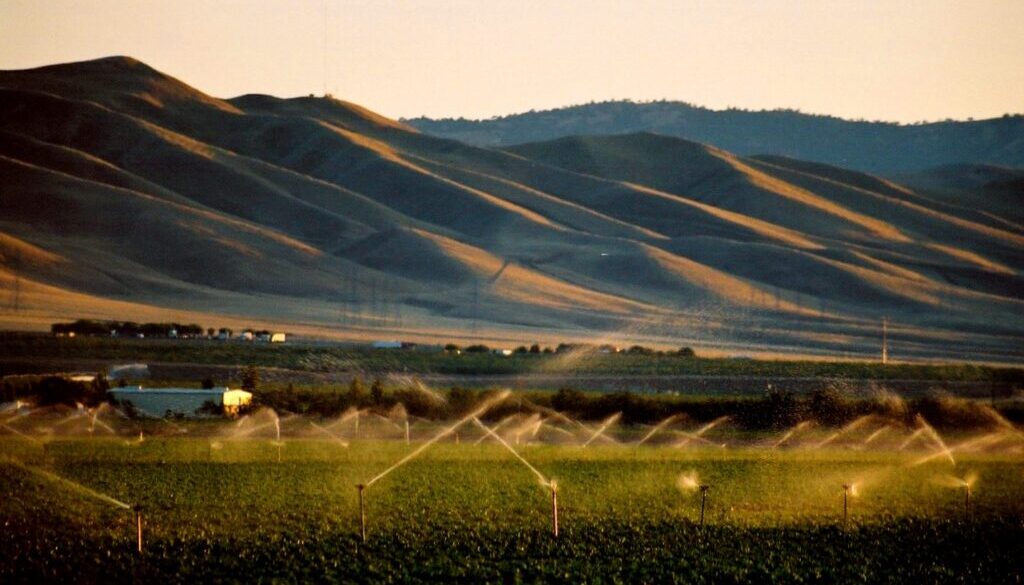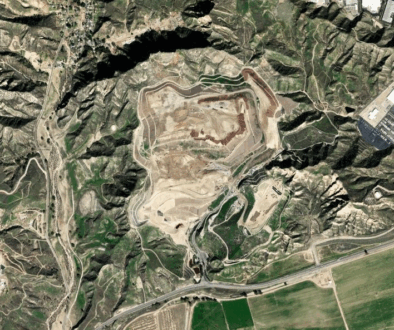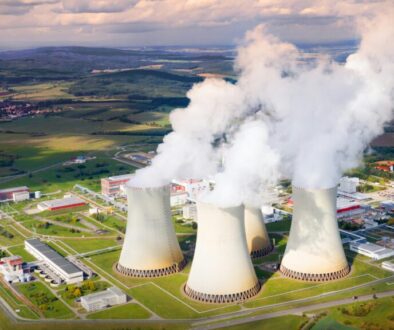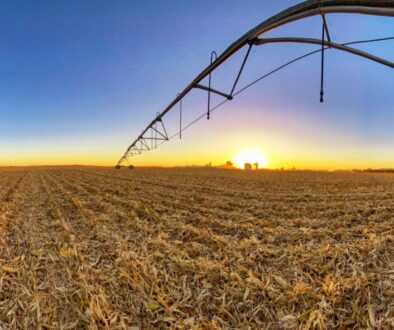Postcard from California: Why the top US farming region is sinking
Listen to the audio version of this article (generated by AI).
 By any measure, California’s San Joaquin Valley is one of the preeminent farming regions in the world. It’s home to the first, second and third-ranking US counties for overall crop production, and the top counties for fruits, nuts and berries, for cotton, and for livestock and poultry.
By any measure, California’s San Joaquin Valley is one of the preeminent farming regions in the world. It’s home to the first, second and third-ranking US counties for overall crop production, and the top counties for fruits, nuts and berries, for cotton, and for livestock and poultry.
That takes a lot of water, and in a semi-arid region of recurrent drought, farmers are always looking for more. The agriculture industry’s seemingly bottomless thirst gives the Valley another distinction: It is losing its groundwater – the essential stores of freshwater in underground aquifers – at a rate among the fastest on Earth.
As a result, the Valley is sinking.
Land subsidence is triggered by farmers drilling thousands of feet deep to tap into the aquifers and pumping the water to the surface. As water is sucked from the aquifers, layers of clay between them and the topsoil compacts, and the ground sinks.
Last year, researchers from Stanford University used satellite imagery to determine that in most years since 2006, some areas of the Valley floor have sunk by a foot a year.
Land subsidence in the Valley from groundwater depletion has long been a problem, as an eye-popping 1977 US Geological Survey photo shows. But the researchers found that groundwater pumping in the Valley accelerated to a record rate during the decade-long, back-to-back droughts that ended in 2017, and has continued apace.
“Never before has (subsidence from groundwater pumping) been so rapid for such a long period of time,” Matthew Lees, the Stanford study’s lead author, now a researcher at the University of Manchester in England, told the Los Angeles Times.
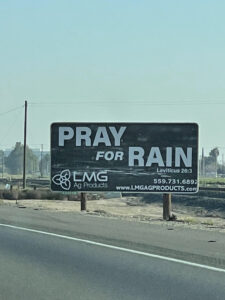
The problem is not unique to California. A recent study found alarming new evidence that the increasingly rapid loss of Earth’s groundwater is a global, even existential, crisis.
The study, published in July by an international team of researchers led by scientists from Arizona State University and the California Institute of Technology, measures what they term “unprecedented continental drying.”
They call it an “emerging threat to humanity … perhaps the direst message on the impact of climate change to date.” The bottom line: “The continents are drying, freshwater availability is shrinking, and sea level rise is accelerating.”
“It’s like this sort of creeping disaster that has taken over the continents in ways that no one was really anticipating,” Arizona State professor Jay Famiglietti, a co-author of the study, told ProPublica.
The team used 22 years of satellite data to measure global trends in freshwater availability and found that three-fourths of the world’s people live in countries that are rapidly losing freshwater. They placed the San Joaquin Valley in the “mega-drying” region of the southwestern US and Central America, which they ranked among the fastest drying regions on Earth.
They calculated that over-pumping of groundwater is responsible for more than two-thirds of freshwater loss in temperate regions. Remarkably, runoff of pumped groundwater and other surface water now contributes more to rising sea levels than the thawing of the Antarctic and Greenland ice sheets.
In the San Joaquin Valley, the global crisis hits home.
As big industrial farms drain the Valley’s aquifers, local communities, people with private residential wells and small farmers – who usually can’t afford the steep costs of drilling deep wells – are at risk of losing their most precious resource.
According to the Water Foundation, a Sacramento-based nonprofit, groundwater is the main source of drinking water for 95% of Valley communities. But it’s running out.
“The continents are drying, freshwater availability is shrinking, and sea level rise is accelerating.” – 2025 study in Science Advances
The state’s Dry Well Reporting System shows that more than 4,200 residential wells in the Valley have gone dry since the system’s inception 12 years ago – a number the state Department of Water Resources (DWR) acknowledges is “undoubtedly under-representative.” Meanwhile, in the last five years, almost 7,000 new agricultural wells have been drilled statewide.
The race to drill deeper recalls a scene in “There Will Be Blood,” a film about the early days of the California oil industry. Daniel Day-Lewis’ character says his neighbor may have a milkshake, but with a long enough straw, “I (can) drink your milkshake.”
“Then, the ‘milkshake’ was petroleum,” said a Los Angeles Times editorial. “Today it is water.”
In 2014, the state passed the Sustainable Groundwater Management Act (SGMA). It created local groundwater agencies and ordered them to develop plans to control over-pumping to protect the drinking water supplies of disadvantaged communities.
In 2022, Gov. Gavin Newsom strengthened SGMA with an executive order directing the agencies to verify that permits for new wells conform to environmental justice principles. But it has hardly slowed the rush to drill.
Rather generously, the law gave the agencies until 2040 or 2042 to implement their sustainability plans, once evaluated and approved by DWR. Of the 39 plans Valley groundwater agencies have submitted so far, half were found inadequate or incomplete.
The Water Foundation analyzed 26 plans for the most severely over-pumped districts in the Valley. It estimated that even if the plans are implemented as written, by 2040 there could be 4,000 to 12,000 more partially or completely dry water wells and 40,000 to 127,000 people who lose some or all of their primary water supply.
Aquifers can be recharged by diverting floodwater or irrigation water to areas where it can percolate into the ground. But that’s a painfully slow process that DWR says can take many years, even centuries.
The Valley’s agricultural industry faces a hard reckoning.
In a 2023 report, the Public Policy Institute of California said in the worst-case scenario, by 2040 over-pumping and climate change could force the fallowing of one-fifth of the Valley’s 4.5 million irrigated acres – a severe blow to the region’s economy.
In Kings County, near the southern end of the Valley, agricultural sales for 2024 were almost $2.6 billion. That April, the California Water Resources Control Board put Kings County on SGMA “probation,” warning that it would be fined if it didn’t do more to curtail groundwater depletion.
Dusty Ference, executive director of the county Farm Bureau, told CalMatters: “In Kings County, there is no other economy.”
“We do not have a tourism industry,” Ference said. “ We do not have an oil and gas industry. We do not have a manufacturing industry.” If forced to stop pumping, he said, “Kings County becomes a ghost town.”
Opinion columns published in The New Lede represent the views of the individual(s) authoring the columns and not necessarily the perspectives of TNL editors.
Featured image: Michael Patrick/flickr
